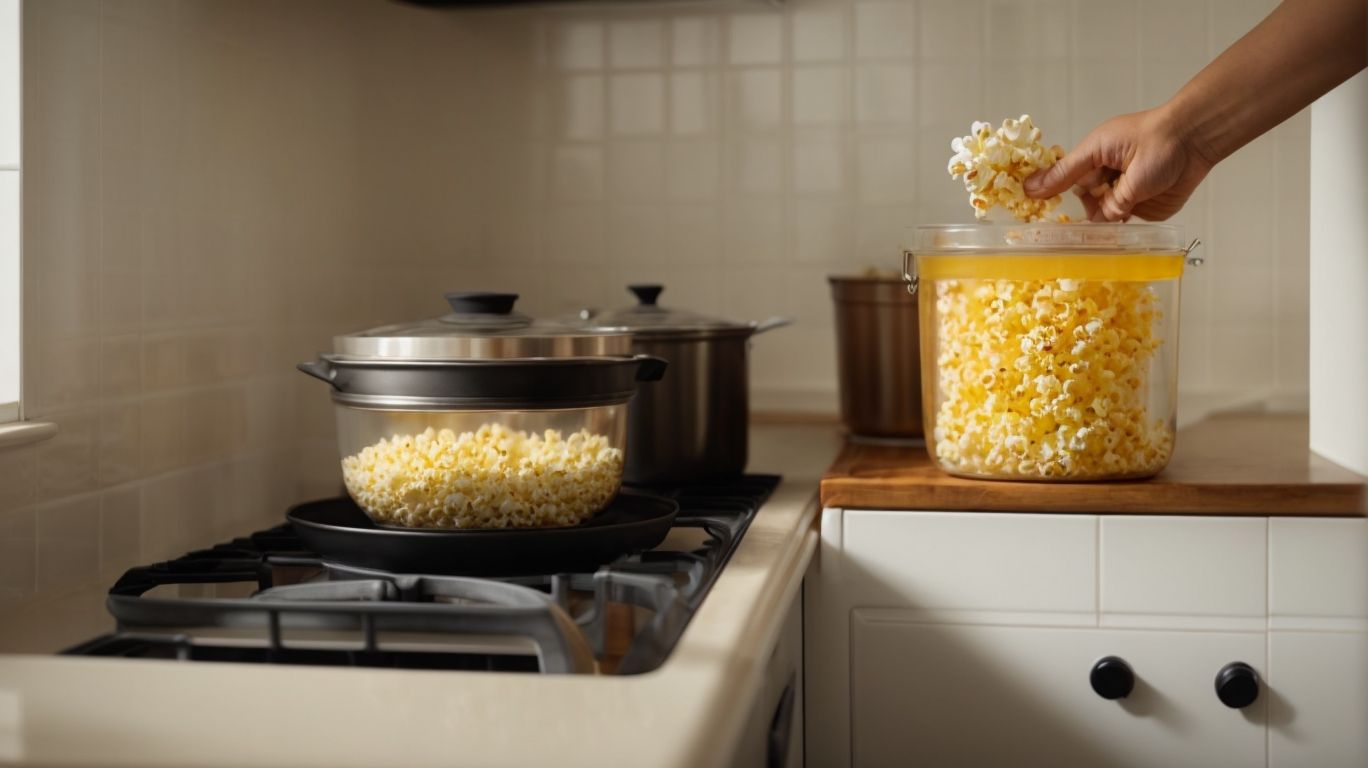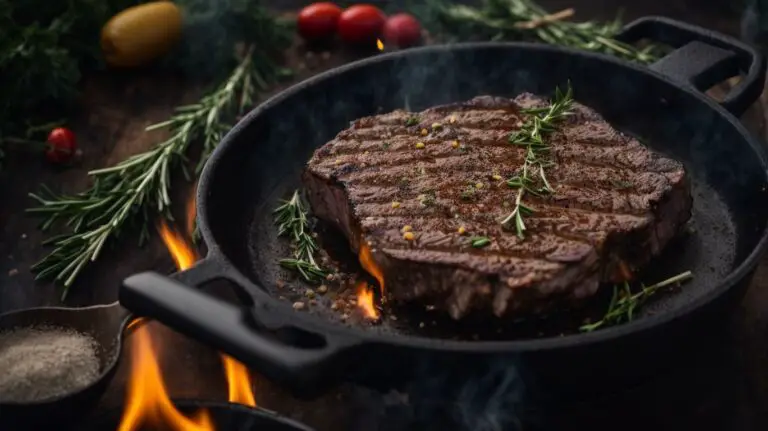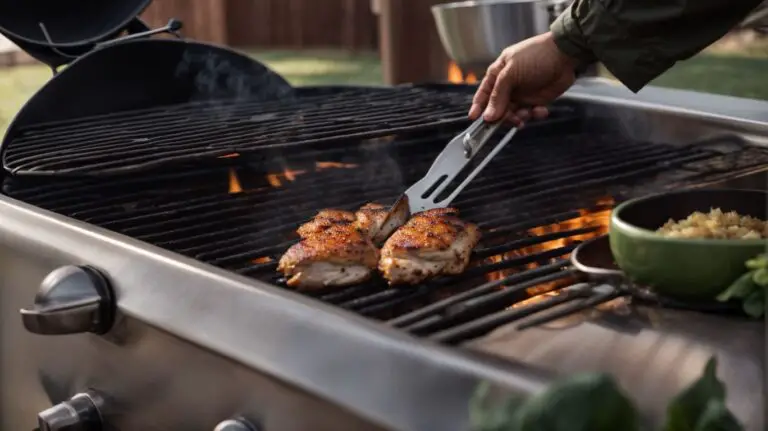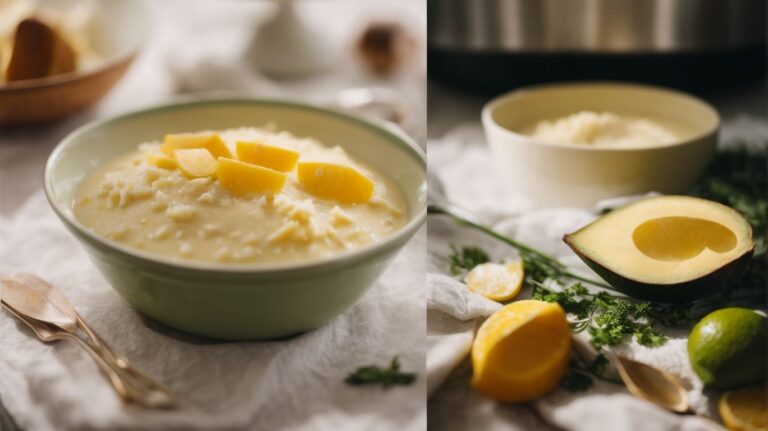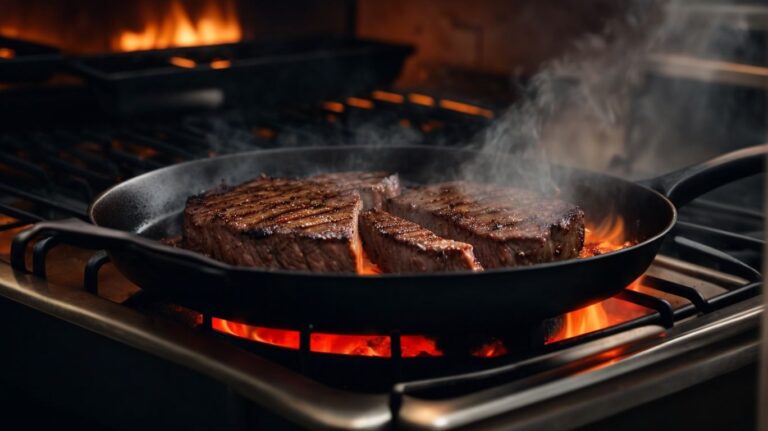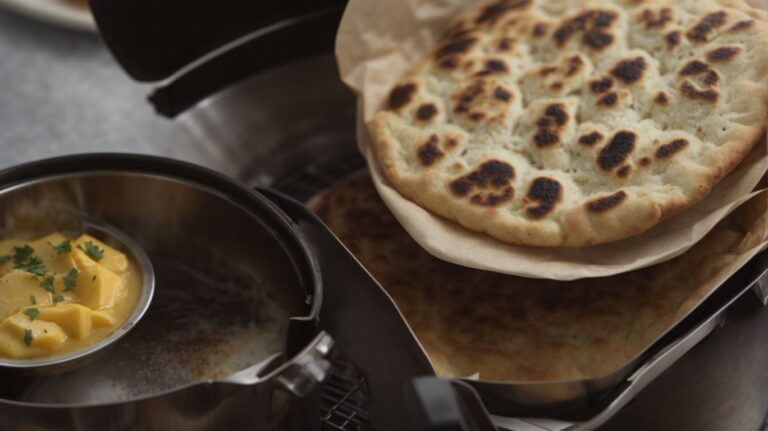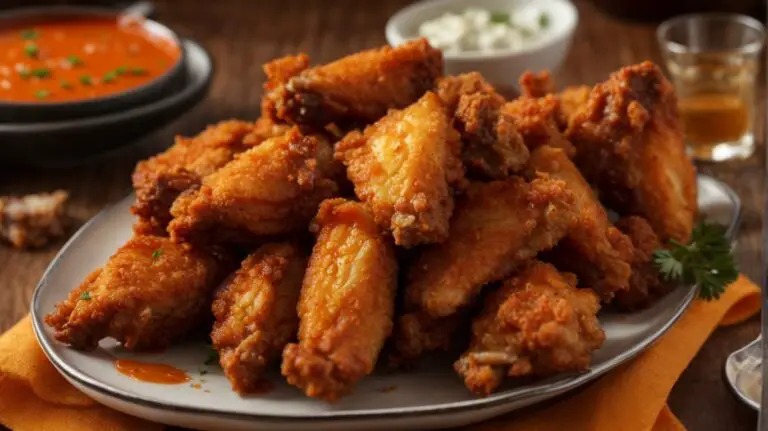How to Cook Popcorn on the Stove?
Craving a delicious snack that is easy to make and bursting with flavor? Look no further than stovetop popcorn!
In this article, we will go over why cooking popcorn on the stove is the way to go, what equipment you need, and a step-by-step guide to making the perfect batch.
We will also explore different seasoning options to elevate your popcorn game and provide you with tips for achieving popcorn perfection every time.
Get ready to impress your taste buds with some homemade stovetop popcorn!
Key Takeaways:
Why Cook Popcorn on the Stove?
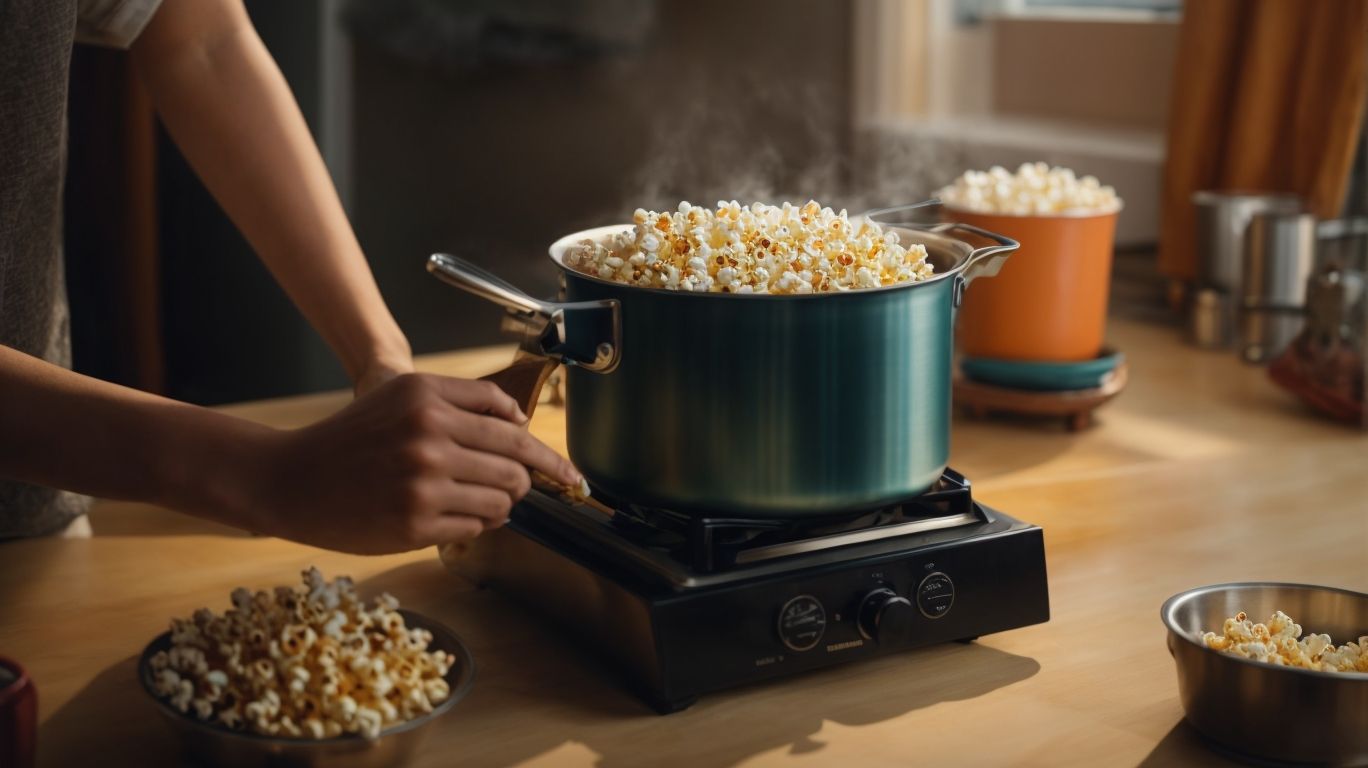
Credits: Poormet.Com – Arthur Flores
Cooking popcorn on the stove offers a traditional and customizable way to prepare this classic snack. Stovetop popcorn allows for healthier options, delicious flavors, and the satisfaction of creating movie theater-style popcorn in the comfort of your home.
One of the key benefits of making popcorn on the stove is the control over ingredients and seasonings. You can choose the type of oil, popcorn kernels, and salt, ensuring a healthier snack without artificial additives.
Another advantage is the versatility in flavor variations. From classic butter and salt to more adventurous options like truffle oil and parmesan or spicy seasonings, the possibilities are endless.
The experience of stovetop cooking adds a sense of nostalgia and joy to the process, allowing you to enjoy the sights and sounds of kernels popping in real-time, engaging all your senses in the culinary creation.
What Equipment Do You Need?
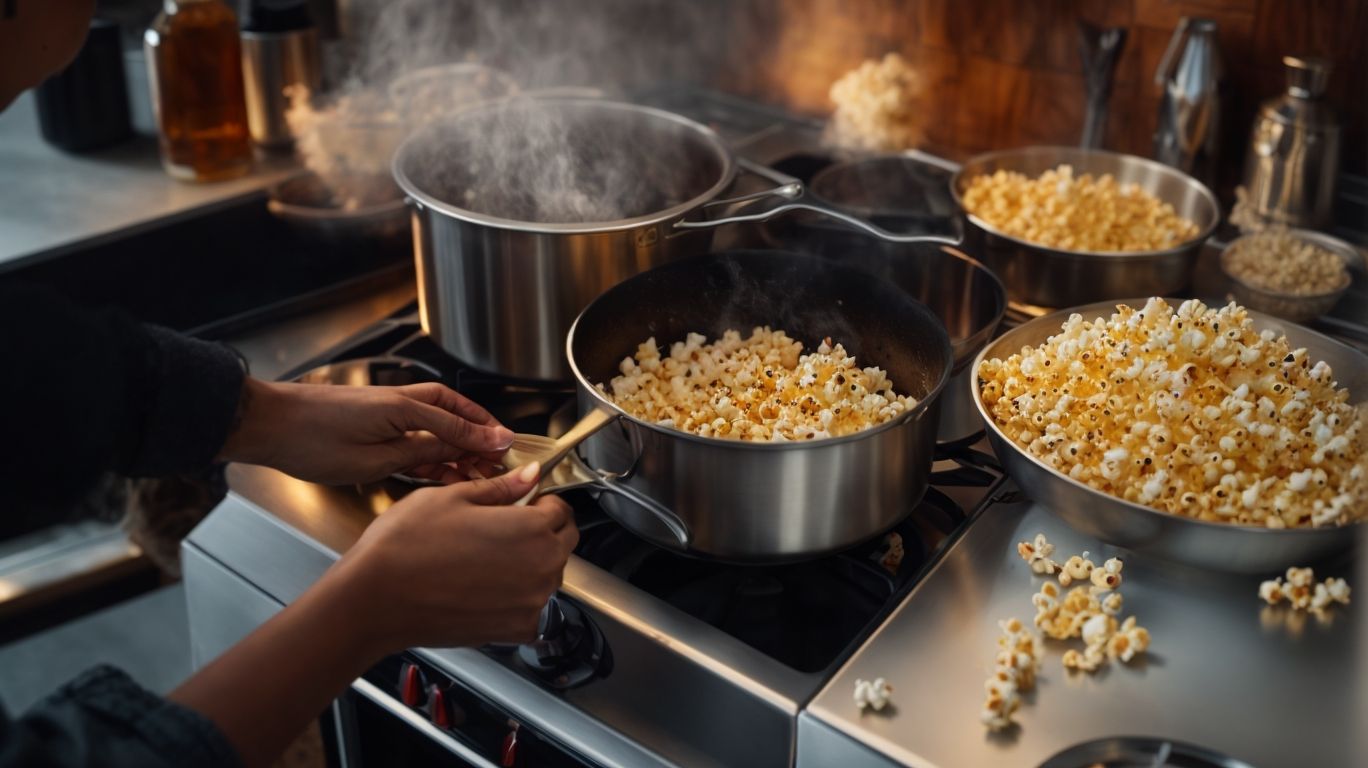
Credits: Poormet.Com – Henry Mitchell
To cook popcorn on the stove, you will need a few essential pieces of equipment. These include a pot with a lid, popcorn kernels, oil for popping, and a stove for heating.
When selecting a pot for stovetop popcorn preparation, opt for a heavy-bottomed pot to ensure even heat distribution and prevent burning. A medium-sized pot around 3 quarts is ideal for popping a moderate amount of kernels without overcrowding. A tight-fitting lid is crucial to trap the heat and steam, allowing the kernels to pop efficiently.
Choosing the right oil is key to achieving that perfect popcorn flavor and texture. Coconut oil is a popular choice due to its high smoke point and the delicious aroma it adds to the popcorn. Alternatively, you can use canola oil or even clarified butter for a rich flavor.
For proper stovetop heating, ensure your stove is set to medium-high heat to create the perfect popping conditions. Too low heat may result in unpopped kernels, while too high heat can burn the popcorn before it fully pops.
Pot with a Lid
A pot with a lid is an essential tool for cooking popcorn on the stove. The lid helps trap heat and steam, ensuring that the kernels pop evenly and preventing them from escaping the pot.
When making stovetop popcorn, the size of the pot matters; you want to choose a pot that allows the kernels enough room to expand without overcrowding. Typically, pots ranging from 3 to 4 quarts are ideal for most popcorn batches, striking a balance between having enough space for popping and preventing overflow.
In terms of materials, opting for pots made from heavy-gauge aluminum or stainless steel can provide even heat distribution, crucial for consistent popping. Look for lids that fit snugly to the pot to keep the steam inside, which helps build pressure for higher pops.
To ensure a delightful popcorn experience, remember to pick a pot with a sturdy handle for easy shaking and a transparent lid to monitor the popping progress without lifting it constantly. Your movie nights will never be the same with perfectly popped stovetop popcorn from a reliable pot!
Oil
Oil is a crucial ingredient for stovetop popcorn, as it helps conduct heat and infuse flavor into the kernels during popping. Different oils like coconut oil, olive oil, or vegetable oils can be used to add a unique taste to the popcorn.
Oil selection plays a significant role in determining the final taste and aroma of your popcorn.
- Coconut oil, known for its delicate sweetness and aroma, imparts a tropical twist to the popcorn.
- On the other hand, olive oil brings a rich, savory flavor that complements the nuttiness of the popcorn kernels.
- Vegetable oils, versatile and mild in taste, offer a neutral base perfect for experimenting with different seasonings.
Popcorn Kernels
Popcorn kernels are the heart of any popcorn-making endeavor, including stovetop preparation. Choosing high-quality kernels ensures a better popping rate and results in fluffy, crunchy popcorn that everyone enjoys.
When selecting popcorn kernels for stovetop popping, size plays a crucial role. Opting for kernels that are not too small or too large promotes even cooking and guarantees a satisfyingly crunchy texture. Another aspect to consider is the variety of kernels available. From classic yellow butterfly kernels to tender white mushroom kernels, each type provides a unique taste experience. Some popular options include Butterfly, Mushroom, and Hulless kernels, each bringing its distinctive qualities to the final popcorn dish.
Step-by-Step Guide to Cooking Popcorn on the Stove
Mastering the art of cooking popcorn on the stove involves several simple steps that result in a delightful snack. By following a precise process of heating the pot, adding kernels, shaking, and waiting for the perfect pop, you can achieve stovetop popcorn perfection.
Start by selecting an appropriate pot with a tight-fitting lid. Place the pot on the stovetop over medium heat and add just enough oil to cover the bottom. Wait until the oil is hot but not smoking before adding the kernels. Patience is key here – you want the kernels to heat evenly without burning. Once you hear the first kernel pop, give the pot a gentle shake every few seconds to prevent burning and ensure all the kernels pop uniformly.
Heat the Pot and Oil
The first step in stovetop popcorn preparation is to heat the pot with oil. Proper heating ensures that the kernels pop evenly and quickly, creating a tasty and satisfying popcorn experience.
Choosing the right oil is crucial for flavor and smoke point. Opt for coconut oil or any high-heat neutral oil like canola or grapeseed. Begin by heating the pot over medium heat to avoid burning the oil, and add just enough to cover the base.
Once the oil shimmers slightly, you can test the heat by tossing in a couple of kernels. If they begin to pop, the oil is ready. Cover the pot partially to prevent oil splatters and keep the heat distributed evenly.
Add the Kernels
Once the oil is heated, it’s time to add the popcorn kernels to the pot. The kernels will start popping, filling your kitchen with the irresistible aroma of freshly popped popcorn.
As the kernels hit the hot oil, they begin their transformation with a symphony of crackling sounds filling the air. Each kernel bursts open with a satisfying pop, releasing a fluffy white inside that signifies it’s ready. It’s crucial to ensure the kernels are evenly distributed to prevent uneven popping rates and burnt pieces. Overcrowding the pot can lead to kernels not popping properly, resulting in a less-than-perfect batch of popcorn.
Shake the Pot
Shaking the pot during popcorn popping helps ensure even heat distribution and prevents burning. This simple action promotes consistent popping and results in perfectly fluffy popcorn.
When shaking the pot while popping popcorn, it’s important to do so regularly but gently. You want to lift the pot slightly off the heat source and give it a good shake every 30 seconds or so. This motion allows the kernels to move around, ensuring that they all get an equal amount of heat. By doing this, you prevent any stray kernels from sticking to the bottom and burning.
One common mistake to avoid is shaking too vigorously, which can lead to kernels flying out of the pot and potentially causing a mess or even burning yourself. It’s all about finding that balance between giving the pot a good shake and being mindful of the popcorn inside.
Remove from Heat and Let it Sit
Once most of the kernels have popped, remove the pot from the heat and let the residual heat finish the popping process. Allowing the popcorn to sit for a brief moment ensures that any remaining kernels pop without burning the already popped ones.
After removing the pot, keep the lid on to contain the heat and ensure even cooking. The trapped heat will help those last few kernels burst into fluffy perfection. Remember, the residual heat is like a gentle caress, coaxing the popcorn to its full potential.
This phase is crucial in achieving that delightful balance between crispiness and fluffiness that makes stovetop popcorn so irresistible. So, exercise patience and let the magic of heat work its final wonders!
How to Season Your Stovetop Popcorn?
Seasoning your stovetop popcorn is an exciting part of the process where you can unleash your creativity and experiment with various flavors. From classic butter and salt to sweet caramel corn or spicy seasonings, the seasoning options are endless and can elevate your popcorn experience.
In terms of evenly coating your popcorn with seasonings, consider using a fine mist spray bottle to ensure a uniform distribution of flavor. When balancing flavors, remember that a combination of sweet and salty can create a delicious contrast on your taste buds. For those looking to try something unique, experiment with truffle oil and parmesan for a gourmet twist or a sprinkle of chili powder and lime zest for a zesty kick. The key is to have fun and tailor the seasonings to your personal preferences.
Classic Butter and Salt
The classic combination of butter and salt is a timeless choice for seasoning stovetop popcorn. The butter adds richness, while the salt enhances the overall flavor profile, creating a simple yet satisfying snack.
In terms of ensuring that your stovetop popcorn is seasoned to perfection, one crucial step is the even distribution of these key ingredients. To achieve optimal flavor, it’s essential to melt the butter gently before drizzling it over the freshly popped kernels. This allows the butter to coat each piece evenly, ensuring that every bite is deliciously buttery.
For those looking to elevate their popcorn game, experimenting with flavored salts or herb-infused butters can add an exciting twist. From truffle salt to smoked paprika-infused butter, the possibilities are endless when it comes to customizing your popcorn seasoning.
Adjusting the salt level is a personal preference, so feel free to sprinkle a little more or less to suit your taste buds. Remember that a light hand is key, as you can always add more salt later but can’t take it away once it’s there. By mastering the art of evenly distributing butter and salt, you’ll be well on your way to enjoying the perfect bowl of stovetop popcorn every time.
Sweet and Salty Caramel Corn
For those with a sweet tooth, caramel corn offers a delightful twist on traditional stovetop popcorn. The combination of sweet caramel and a hint of salt creates a perfect balance of flavors that satisfies both sweet and savory cravings.
Creating caramel-coated popcorn involves simmering sugar, butter, and corn syrup until it transforms into a rich amber hue, then drizzling it over freshly popped corn, allowing the sweet mixture to coat each kernel. The caramel texture should be glossy and crunchy, providing a satisfying contrast to the fluffy popcorn within.
For those looking to elevate this treat, incorporating roasted peanuts or chocolate chunks can add additional layers of flavor and texture. The nutty crunch or the decadent sweetness of chocolate complements the caramel coating, making each bite a delightful experience.
Spicy Popcorn
For those who enjoy a bit of heat, spicy popcorn is a bold and flavorful choice. Adding spices like black pepper or chili powder to stovetop popcorn can elevate the taste profile and add a zing to your snacking experience.
In terms of spicing up your popcorn, the options are endless. Dusting your popcorn with a blend of cayenne and garlic powder can bring a fiery kick, while a mix of smoked paprika and cumin offers a smoky depth of flavor. To ensure the spices coat the popcorn evenly, toss it in a mixing bowl right after popping or use a fine mesh sieve to sprinkle the seasonings. Experimenting with different ratios of spices allows you to customize the heat level to your liking, from mild to extra hot.
Tips for Perfect Stovetop Popcorn
Achieving perfect stovetop popcorn requires attention to detail and some handy tips to enhance the popping experience. From selecting the right pot to seasoning immediately after popping, these tips will elevate your stovetop popcorn game.
In terms of pot selection, opt for a heavy-bottomed one to ensure even heat distribution. Handling the lid during popping is crucial to let steam escape and prevent soggy popcorn. Remember to shake the pot gently while popping to prevent burning and promote kernel movement.
To avoid common pitfalls, such as burnt kernels, keep the heat at a medium level and adjust as needed to maintain a steady popping rate. Experimenting with various flavor combinations, like sweet and salty mixes or spicy seasonings, can add a delightful twist to your popcorn.
Use the Right Pot
Choosing the correct pot for stovetop popcorn is essential to ensure even heating and proper kernel distribution. Opt for a pot with a thick bottom to prevent burning and a sturdy handle for easy shaking.
The material of the pot plays a crucial role in heat distribution; stainless steel and aluminum are popular choices due to their durability and conductivity.
In terms of size, consider a larger pot for making bigger batches of popcorn, ensuring enough room for all kernels to pop without overcrowding.
Proper maintenance, such as hand washing and avoiding harsh cleaners, can extend the lifespan of your pot and prevent flavor alterations.
Ultimately, the quality of your pot directly affects the final taste and texture of your popcorn, so investing in a high-quality option can truly elevate your stovetop popcorn experience.
Keep the Lid Slightly Ajar
While cooking popcorn on the stove, it’s beneficial to keep the lid slightly ajar to allow steam to escape. This technique prevents condensation from dripping back into the pot and keeps the popcorn crispy.
Positioning the lid in a slightly tilted manner on the pot ensures a controlled release of steam, which not only prevents soggy popcorn but also helps in achieving that perfect crunch. Managing the lid opening is crucial to strike a balance between letting out excess moisture and retaining the ideal heat level for the kernels to pop uniformly.
This method not only impacts the popcorn texture but also plays a significant role in flavor retention. By allowing steam to escape, you avoid trapping excess moisture that could lead to a loss of crispiness and dilution of flavor. It helps in concentrating the natural flavors of the popcorn, resulting in a more intense and enjoyable snacking experience.
Don’t Overcrowd the Pot
To achieve optimal popping results, it’s important not to overcrowd the pot with too many kernels. Overcrowding can lead to uneven heating and insufficient space for kernels to pop fully.
When preparing stovetop popcorn, ensuring that there is ample room for each kernel to expand is crucial. Kernel distribution plays a vital role in determining the quality of your popcorn. By distributing the kernels evenly across the bottom of the pot, you can help them heat up uniformly, reducing the chances of some kernels burning while others remain unpopped.
It’s essential to be mindful of batch sizes when making stovetop popcorn. Instead of dumping all the kernels in at once, consider popping smaller batches to maintain control over the heat distribution and ensure consistent popping.
Shake the Pot Frequently
Frequent shaking of the pot during popcorn popping is crucial to prevent burning and ensure uniform heat distribution. The shaking action helps kernels move around, pop evenly, and coat with flavorings for a delightful snack.
In terms of perfecting stovetop popcorn, mastering the art of shaking is key. By gently agitating the pot, you prevent any single kernel from getting scorched, resulting in a more enjoyable snacking experience. Proper shaking technique involves giving the pot a gentle back-and-forth motion, ensuring that all kernels have their fair share of time in contact with the heat.
This continuous movement not only aids in preventing burning but also assists in spreading out the flavorings uniformly. It allows for a balanced distribution of butter, salt, or any other toppings you may prefer, leading to a more flavorful popcorn overall.
Season Immediately After Popping
For the best flavor absorption, it’s recommended to season stovetop popcorn immediately after popping. The warm popcorn ensures that seasonings adhere well, providing a burst of flavor with every bite.
One popular technique for seasoning stovetop popcorn is to melt a bit of butter or drizzle olive oil over the freshly popped kernels right before adding the seasonings. The warmth of the popcorn helps the seasonings meld together nicely, creating a harmonious blend of flavors. Consider using finely grated cheese or powdered seasonings for even distribution across the whole batch.
Frequently Asked Questions
How to Cook Popcorn on the Stove?
FAWhat is the best type of pot to use when cooking popcorn on the stove?
The best type of pot to use when cooking popcorn on the stove is a heavy-bottomed pot with a tight-fitting lid. This will ensure that the heat is evenly distributed and the popcorn kernels won’t burn.
How to Cook Popcorn on the Stove?
FAWhat type of oil should I use when cooking popcorn on the stove?
The best type of oil to use when cooking popcorn on the stove is one with a high smoke point, such as canola, vegetable, or coconut oil. Avoid using olive oil as it has a low smoke point and can burn easily.
How to Cook Popcorn on the Stove?
FACan I use a regular pot without a lid to cook popcorn on the stove?
It is not recommended to use a regular pot without a lid when cooking popcorn on the stove. The lid helps to trap the steam and heat, which helps the kernels to pop evenly and prevents them from flying out of the pot.
How to Cook Popcorn on the Stove?
FADo I need to preheat the oil before adding the popcorn kernels?
Yes, it is important to preheat the oil before adding the popcorn kernels. This will ensure that the kernels pop evenly and prevent them from burning.
How to Cook Popcorn on the Stove?
FAHow long does it take to cook popcorn on the stove?
On average, it takes about 3-4 minutes for popcorn to pop on the stove. However, the exact timing may vary depending on the type of pot and heat source you are using.
How to Cook Popcorn on the Stove?
FACan I add flavorings to the popcorn while it is cooking on the stove?
No, it is not recommended to add flavorings such as salt or seasonings while the popcorn is cooking on the stove. The flavorings can burn and affect the taste of the popcorn. It is best to add them after the popcorn is fully cooked.

